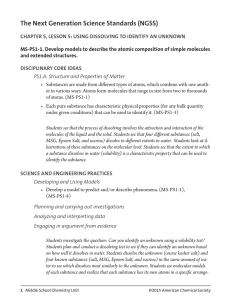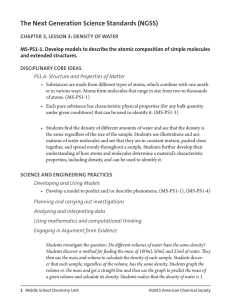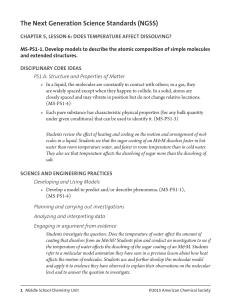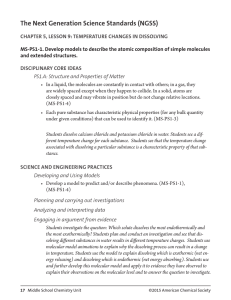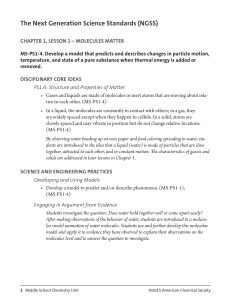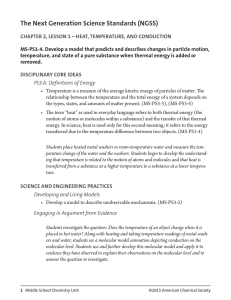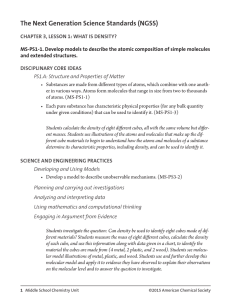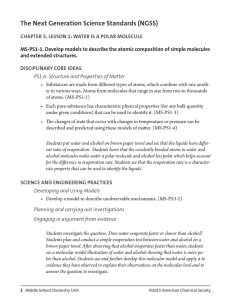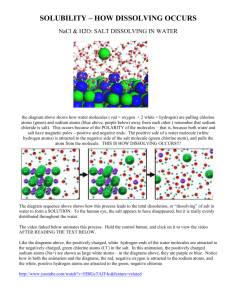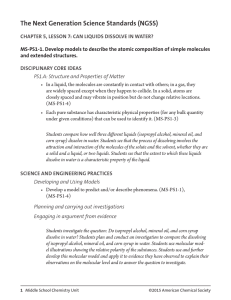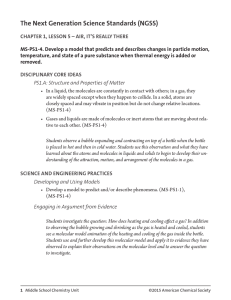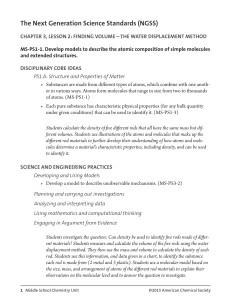The Next Generation Science Standards (NGSS)
advertisement
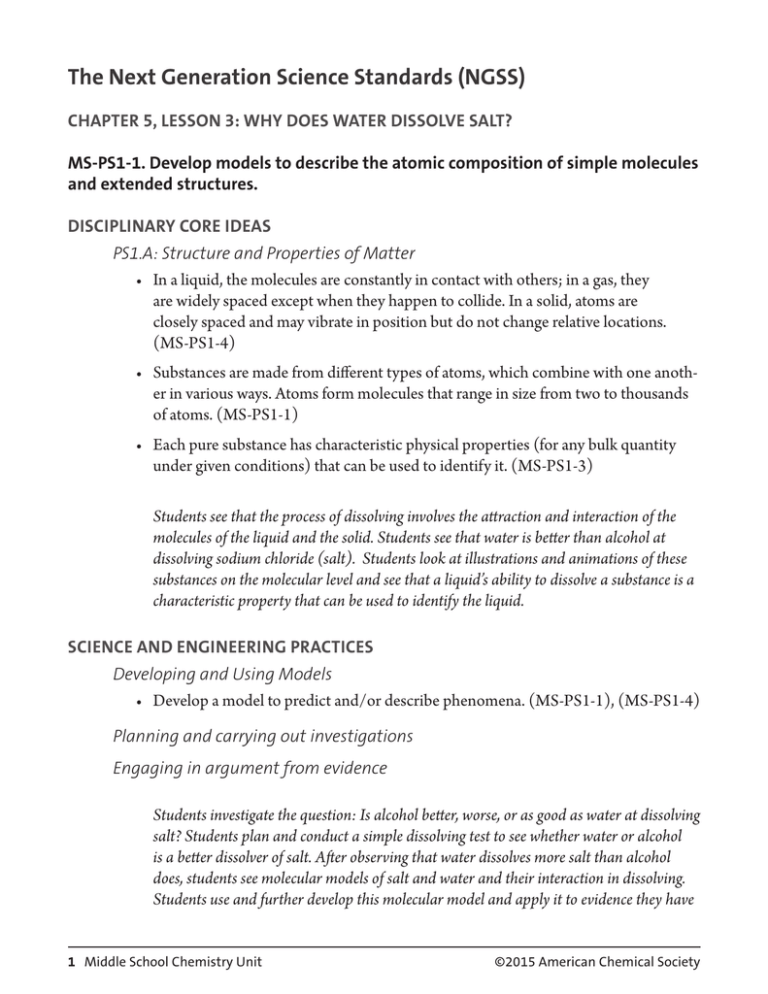
The Next Generation Science Standards (NGSS) CHAPTER 5, LESSON 3: WHY DOES WATER DISSOLVE SALT? MS-PS1-1. Develop models to describe the atomic composition of simple molecules and extended structures. DISCIPLINARY CORE IDEAS PS1.A: Structure and Properties of Matter • In a liquid, the molecules are constantly in contact with others; in a gas, they are widely spaced except when they happen to collide. In a solid, atoms are closely spaced and may vibrate in position but do not change relative locations. (MS-PS1-4) • Substances are made from different types of atoms, which combine with one another in various ways. Atoms form molecules that range in size from two to thousands of atoms. (MS-PS1-1) • Each pure substance has characteristic physical properties (for any bulk quantity under given conditions) that can be used to identify it. (MS-PS1-3) Students see that the process of dissolving involves the attraction and interaction of the molecules of the liquid and the solid. Students see that water is better than alcohol at dissolving sodium chloride (salt). Students look at illustrations and animations of these substances on the molecular level and see that a liquid’s ability to dissolve a substance is a characteristic property that can be used to identify the liquid. SCIENCE AND ENGINEERING PRACTICES Developing and Using Models • Develop a model to predict and/or describe phenomena. (MS-PS1-1), (MS-PS1-4) Planning and carrying out investigations Engaging in argument from evidence Students investigate the question: Is alcohol better, worse, or as good as water at dissolving salt? Students plan and conduct a simple dissolving test to see whether water or alcohol is a better dissolver of salt. After observing that water dissolves more salt than alcohol does, students see molecular models of salt and water and their interaction in dissolving. Students use and further develop this molecular model and apply it to evidence they have 1 Middle School Chemistry Unit ©2015 American Chemical Society observed to explain their observations on the molecular level and to answer the question to investigate. CROSSCUTTING CONCEPTS Cause and Effect • Cause and effect relationships may be used to predict phenomena in natural or designed systems. (MS-PS1-4) Scale, Proportion, and Quantity • Time, space, and energy phenomena can be observed at various scales using models to study systems that are too large or too small. (MS-PS1-1) Students use molecular-level models of water and alcohol to explain how these sub-microscopic characteristics affect the macroscopic observable characteristic of differences in their ability to dissolve salt. 2 Middle School Chemistry Unit ©2015 American Chemical Society
